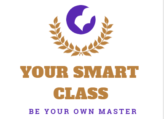Introduction
The Textbook Method of teaching is one of the most widely used approaches in classrooms, especially in subjects like social science. This method revolves around the systematic study of a textbook, which serves as the primary source of information. While it ensures structured content and curriculum coverage, its effectiveness depends on how it is implemented in the classroom.
In this post, we’ll explore the Textbook Method of teaching social science, discussing its features, benefits, limitations, and how teachers can make it more engaging for students.
What is the Textbook Method of Teaching Social Science?

The Textbook Method involves using the textbook as the central teaching tool. Teachers present concepts, facts, and explanations directly from the textbook, guiding students through its content. This method ensures that students receive accurate and standardized information, aligned with the prescribed curriculum.
In social science, textbooks cover topics like history, geography, civics, and economics, helping students build foundational knowledge in an organized manner.
Key Features of the Textbook Method
- The textbook serves as the primary teaching and learning resource.
- Emphasizes structured content delivery, ensuring syllabus coverage.
- Promotes reading, comprehension, and note-taking skills.
- Often accompanied by explanations and examples provided by the teacher.
Steps Involved in the Textbook Method
Introduction and Overview
- The teacher introduces the topic and outlines the objectives of the lesson.
- Example: In a lesson on climate zones, the teacher previews key concepts and sections of the textbook.
Reading and Explanation
- The teacher reads from the textbook and explains difficult concepts or key points in detail.
- Example: Explaining different types of climates and their impact on human life using the textbook content.
Question and Answer Session
- The teacher asks questions based on the text to ensure student understanding.
Note-Taking and Summary
- Students take notes on important points. The teacher summarizes the key concepts.
Assessment and Homework
- Students answer textbook-based questions and complete related activities or assignments.
Benefits of the Textbook Method in Social Science
Structured and Organized Learning
- Textbooks provide a clear and well-organized structure for both teachers and students.
Curriculum Alignment
- Ensures that the syllabus is covered systematically and no important topics are missed.
Accurate and Reliable Information
- Textbooks are prepared by experts, ensuring the content is fact-checked and aligned with educational standards.
Self-Learning Support
- Students can revisit the textbook to review concepts and clarify doubts on their own.
Focus on Reading and Comprehension
- Encourages students to develop reading habits and comprehension skills.
Cost-Effective
- Compared to digital tools and project-based learning, textbooks are affordable and accessible to all students.
Limitations of the Textbook Method
Lack of Active Engagement
- The method often promotes passive learning, with students merely reading and listening without active participation.
One-Size-Fits-All Approach
- Textbooks may not cater to the diverse learning styles and needs of all students.
Limited Critical Thinking
- Focuses more on memorization and factual knowledge rather than developing critical thinking and analytical skills.
Outdated Content
- In some cases, textbooks may contain outdated information, especially in subjects like political science or economics.
Teacher Dependency
- The success of this method largely depends on how effectively the teacher explains and supplements the textbook content.
How to Make the Textbook Method More Effective
1. Integrate Discussions and Interactive Activities
- Encourage students to discuss the topics covered in the textbook.
- Example: After reading about democratic governance, initiate a classroom debate on its advantages and challenges.
2. Use Visual Aids and Real-Life Examples
- Supplement textbook content with maps, charts, videos, and real-world examples to enhance understanding.
3. Encourage Independent Research
- Motivate students to go beyond the textbook by exploring related articles, documentaries, and case studies.
4. Assign Group Projects and Presentations
- Allow students to work in groups on topics from the textbook and present their findings to the class.
5. Focus on Higher-Order Thinking Skills
- Go beyond factual questions and ask students to analyze, evaluate, and apply the information they learn from the textbook.
Application of the Textbook Method in Social Science
History
- Use the textbook to introduce historical events and timelines, supplemented with primary source documents and historical fiction.
- Example: Teaching the Industrial Revolution with related images and personal accounts.
Geography
- Explain physical features, climates, and ecosystems using maps and satellite images alongside the textbook content.
Civics
- Cover concepts of democracy, government structures, and citizenship, followed by real-world examples and classroom discussions.
Economics
- Teach basic economic concepts, such as demand and supply, using the textbook as a foundation and supplementing it with current events.
Best Practices for Teachers
- Prepare in Advance: Familiarize yourself with the textbook content before class and plan how to explain complex topics.
- Engage Students Actively: Ask open-ended questions and encourage students to relate textbook content to their own experiences.
- Supplement Textbook Content: Use multimedia tools, field trips, and guest speakers to bring textbook concepts to life.
- Assess Understanding Regularly: Use both textbook-based questions and creative assessments to check student comprehension.
Conclusion
The Textbook Method of teaching social science remains an essential approach in education, providing structure, accuracy, and comprehensive content coverage. While it has limitations, teachers can enhance its effectiveness by incorporating interactive activities, discussions, and multimedia tools.
By blending the Textbook Method with modern teaching strategies, educators can create a more engaging and enriching learning experience for students, ensuring that they develop both foundational knowledge and critical thinking skills.
Share this:
Discover more from YOUR SMART CLASS
Subscribe to get the latest posts sent to your email.








